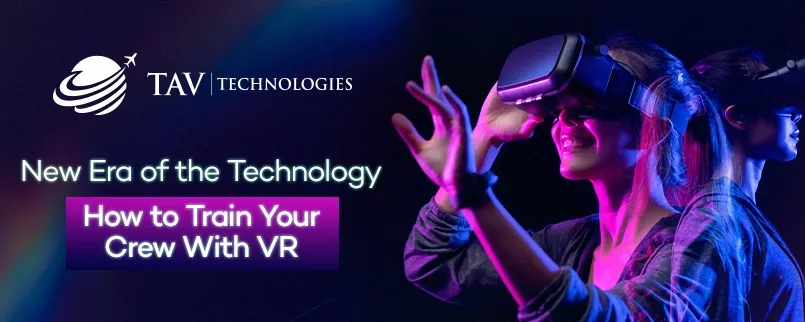
Jun 2024
Airports are lively hubs, and keeping things running smoothly takes a whole team of amazing people. From helping passengers check in to guiding giant airplanes, airport staff play a vital role. But how do they learn their roles? Enter Virtual Reality (VR) training – a super cool way to practice airport skills in a safe, virtual world.
Imagine you put on a special headset and gloves. Suddenly, you're transported away to a realistic airport environment. It feels real, but it's all created by a computer! This is the magic of VR.
What is Virtual Reality (VR)?
Virtual Reality (VR) is a technology that creates a simulated environment, allowing users to interact with 3D worlds that feel incredibly lifelike. By wearing special headsets and sometimes using additional gear like gloves or handheld controllers, users can experience and manipulate these virtual spaces as if they were real. VR technology tracks the user's movements and adjusts the virtual environment accordingly, creating an immersive experience. This powerful tool is used not only for entertainment but also for education, training, and many professional applications, including airport staff training.
How does VR training benefit airport employees?
- Practice Makes Perfect: VR lets you rehearse different tasks, like checking in passengers or signaling to pilots, over and over again. Make a mistake? No sweat! Just try again until you feel confident. For example, a new gate agent at Munich Airport can practice using the check-in system in VR. They can learn how to handle different situations, like oversized baggage or anxious passengers, in a safe environment before facing them in real life.
- Become a Global Airport Expert: VR can transport you to different airport layouts and show you various airplane models. This way, even if you've never seen a specific plane before, you'll be ready to handle it like a pro! No more surprises when a giant double-decker airplane rolls in. For instance, Basel Airport is using this technology and a ground crew member at Basel Airport VR to familiarize themselves with a new type of aircraft, learning where the doors are located, how to connect ground power, and how to signal to the pilot for safe maneuvering.
- Safety First: VR can put you in tricky situations, like a fire drill or bad weather scenario. By practicing how to handle these emergencies in a safe, virtual space, you'll know exactly what to do if something unexpected happens for real. Imagine a security officer in your airport practicing how to respond to a suspicious passenger or a medical emergency on a plane using VR. They can learn the proper procedures and communication techniques in a controlled environment.
- Learning is Fun: VR makes learning exciting and interactive. It feels more like playing a game than studying a textbook. This makes it easier to remember information and keeps you engaged. For instance, a customer service representative can practice dealing with frustrated passengers whose flights are delayed in VR. They can learn de-escalation techniques and effective communication skills in a safe space.
Exploring VR Training Across Airport Departments:
VR training isn't just limited to specific roles; it's a versatile tool that can change training across various airport departments. From air traffic control to maintenance crews, each facet of airport operations can benefit from immersive VR experiences. For instance, air traffic controllers can use VR simulations to practice managing complex airspaces and coordinating arrivals and departures, ensuring optimal efficiency and safety. Maintenance crews can familiarize themselves with different aircraft models and troubleshoot mechanical issues in a virtual environment, reducing downtime and improving aircraft turnaround times. Baggage handlers can simulate loading and unloading procedures, minimizing errors and streamlining baggage flow. By extending VR training beyond frontline roles, airports can elevate performance across the board, resulting in smoother operations and enhanced passenger satisfaction.
VR training is a game-changer for airport staff. It's safe, engaging, and effective. By using VR, airports around the world are creating a smoother and safer environment for everyone – passengers and staff alike!
Taking Flight with VR Training
Virtual Reality (VR) training stands as a transformative tool in the aviation industry, revolutionizing how airport staff prepare for their crucial roles. By providing a safe, immersive environment for practice, VR empowers airport heroes to hone their skills, tackle emergencies with confidence, and deliver exceptional service to passengers worldwide. As airports continue to embrace technological advancements, the integration of VR training promises to elevate operational efficiency, enhance safety measures, and ultimately create a smoother, more enjoyable travel experience for all.
